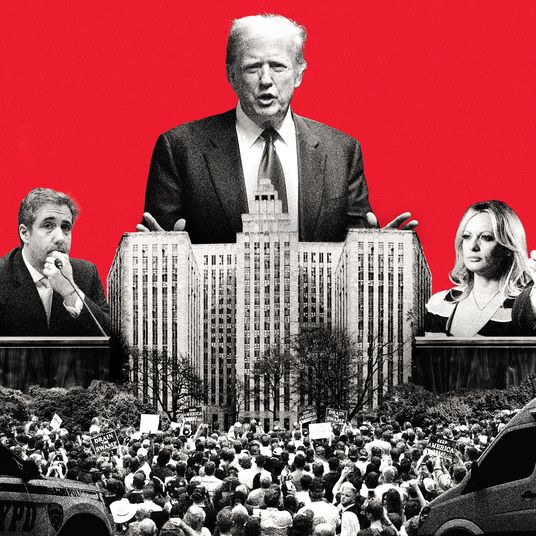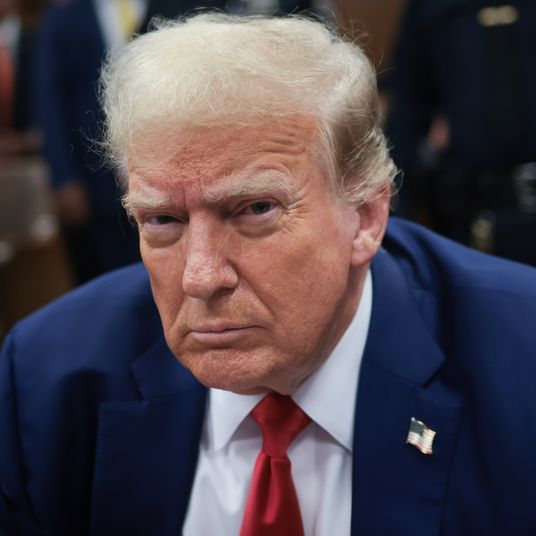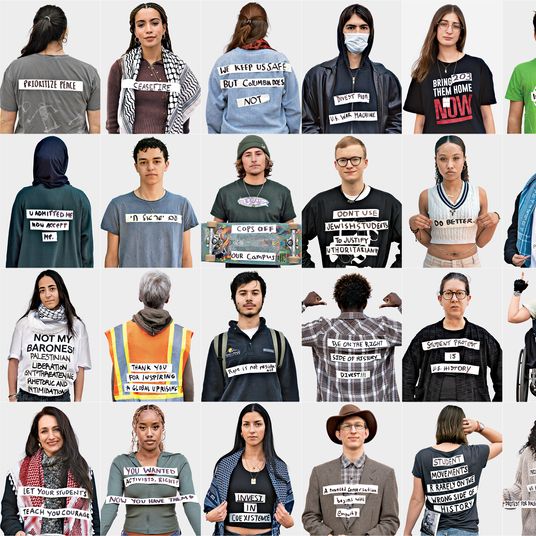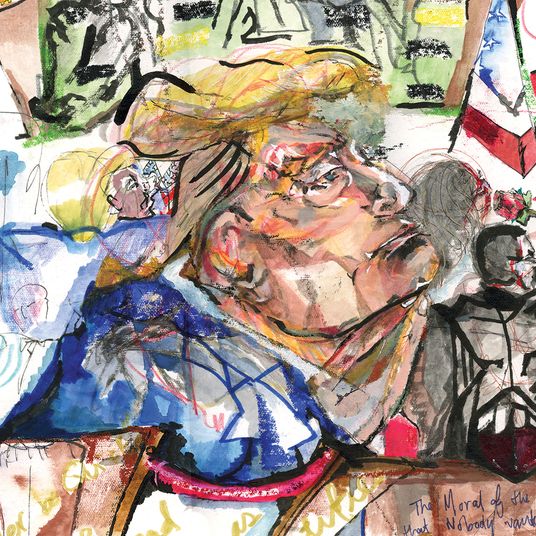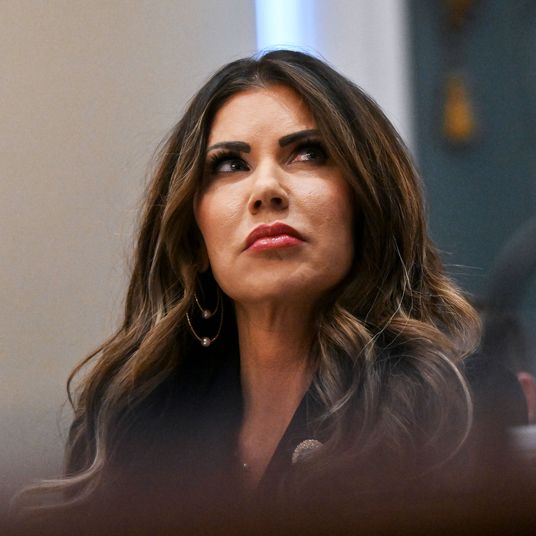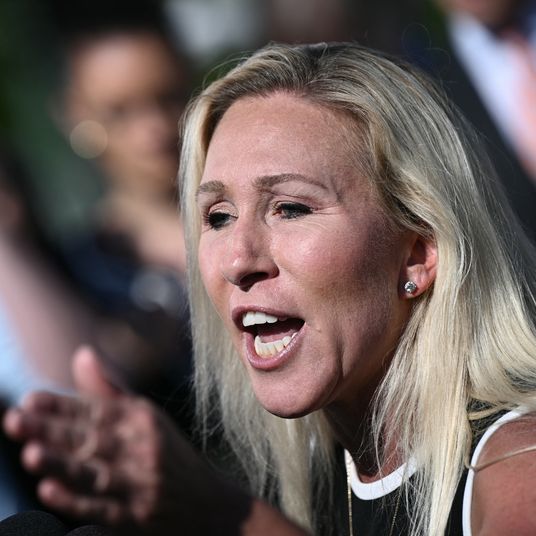One of the most historically unusual aspects of the Biden administration has been the harmonious relations between the president and progressive activists. Historically, progressives generally spend most of their time complaining about Democratic presidents, both because they are temperamentally prone to negativity and because they believe in the tactical value of holding presidents’ feet to the fire. President Biden has enjoyed unusually warm support from the left. But that may be coming to an end.
Reporters have detected a pattern in three of the administration’s recent moves. Biden is declining to block a bill in Congress overriding a liberalization of the D.C. criminal code, angering both advocates of D.C. sovereignty and anti-police activists. He approved a plan to allow ConocoPhillips to drill oil in Alaska. And he is signaling an intent to reinstate family detention along the southern border in order to deter migrants.
Another perhaps even more significant sign comes from Biden’s budget proposal, which lacks a health-care public option and lower eligibility for Medicare. Of course, with a Republican House, Biden’s budget is merely a messaging vehicle, but the absence of these items signals a retreat in even his idealized ambitions.
It’s possible these assorted facts have occurred due to a series of independent events, with no connection to each other. But what I think is happening is part of a broader pattern that we will recognize as an ideological turning point of sorts.
Beginning in the second term of the Obama administration, the progressive movement — which barely existed in unified form before Barack Obama took office — gained coherence and influence within the party. Its overriding political strategy was that Democrats could and should adopt more forcefully progressive ideas, and that doing so would have no political cost. Indeed, many progressives believed these positions would help the party by mobilizing turnout among non-white voters.
Obama’s reelection created a buoyant belief among progressives (which I then shared) that a new majority coalition of minorities and college-educated whites had finally emerged. In 2016, Hillary Clinton ran on a platform that was, both in rhetoric and in substance, considerably to the left of what President Obama had run on four years earlier. That fact was largely obscured both during and after the election, in part because her main challenger had run even farther left.
And so the party continued moving left during the Trump era. Even though the 2018 midterm elections saw the party’s House caucus move right — because its new members were largely moderates from battleground districts — both the mainstream media and the conservative media decided, for different reasons, to focus on the small number of left-wing Democrats who had won in deep-blue districts. Figures like Alexandria Ocasio-Cortez, who briefly occupied an outsize role in political coverage, were presumed to embody the party’s future.
That assumption drove media coverage of the Democratic presidential primary. Reporters and candidates alike treated attention and praise from progressive activists as a key metric of success. Analysts praised the “policy arms race” in which Democrats kept racing to outflank each other with bigger and bolder plans.
In reality, the party’s voters had not moved as far left as either the press or most of the candidates assumed. This disconnect led to dynamics like Elizabeth Warren scooping up media coverage and endorsements from progressive activists without gaining any headway among the voters those activists purported to represent.
Joe Biden won the primary in large part because he had opted out of the race to the left. And yet the assumption of progressive ascendancy remained so deeply ingrained that most Democrats assumed he had won despite, rather than because of, his moderation. After winning the nomination, Biden confounded the normal practice of moving to the center and instead adopted a “unity platform” in conjunction with the candidates he defeated, taking positions to the left of those he had campaigned and won on.
This was the pre-condition for the alliance between Biden and the progressive movement. Both believed Biden was putting himself in position to enact historic change on the scale of the New Deal. And polls, which showed him poised to win by close to double digits, indicated Biden stood to benefit from and exploit his bold platform.
The basic assumption survived Biden’s surprisingly narrow victory. Yes, Democrats had fared worse than they expected, but Biden did not abandon the platform he had run on. He still confronted a deep economic crisis and pressed his domestic reforms as far as he could, until the party’s fiscally conservative wing forced him to settle for a rump version of Build Back Better.
The alliance between Biden and the progressives still held firm during this period of retrenchment. Biden was pushing to the left on economic policy and making clear the limits to his ambitions lay elsewhere (mostly figures like Joe Manchin and Kyrsten Sinema). Progressives believed Biden was an effective messenger for their movement because he was old, white, male, and nonthreatening — and that his persona freed them from having to make substantive policy concessions.
The mutual assumption that Biden would support the progressive policy agenda, and that progressives would in turn withhold criticism from him, appears to be coming apart. The dissolution of this alliance, if it is indeed happening, is in its early stages. Possibly this will come to be seen as just a brief period of turbulence in the middle of a smooth ride.
The reason I believe recent events portend a change is that a series of underlying conditions that permitted the alliance between progressives and Biden is changing. Here are the four I have in mind.
Personnel. Biden’s departed chief of staff, Ron Klain, attended fastidiously to progressive groups, making them not only feel valued but possess real influence. His successor, Jeffrey Zients, keeps much more distant relations with the professional left, which greeted his elevation by calling him a “corporate stooge.”
Progressives have treated the transition from Klain to Zients as the main cause of Biden’s moderate turn. And while it probably had a role, I believe underlying conditions played a more important role — it’s less that Biden is moving to the center because he replaced Klain with Zients, than he replaced Klain with Zients because he had to move to the center.
Political conditions. The 2022 midterm elections gave more support to the value of winning the political center than it did to the strategy of base mobilization. The Democrats who overperformed most dramatically tended to be ones like Elissa Slotkin and Abigail Spanberger, who emphasized messages of bipartisanship and distanced themselves from their party’s left wing. Even Democrats who had somewhat more congenial ties with the left, like John Fetterman and Raphael Warnock, made cultural appeals to the center and renounced unpopular progressive ideas like defunding the police.
The winning formula involved persuading small numbers of cross-pressured voters, rather than mobilizing turnout among the base. Indeed, in Georgia, a state that progressives had once held up as a laboratory of base-driven victory, Democrats prevailed by flipping Republican voters, not by winning the turnout war.
More broadly, the political landscape during Biden’s first two years has been dominated by the concerns of voters over crime and gasoline prices. Attending to those concerns has forced Democrats to take positions at odds with the goals of their own base.
Policy needs. The deepest substantive break between Biden and progressives is likely to center on climate policy. In part, this is because the biggest area of overlap between Biden’s goals and those of the left — increasing subsidies for green energy — has been accomplished. With that off the table, what remains to be settled are matters that divide the administration from the progressive movement.
One of those is gasoline prices. This is a change that began under Klain, who recognized the outsize role voters place on the cost of filling up their tanks. The progressive climate agenda of keeping fossil fuels in the ground is a plan that requires putting upward pressure on gasoline prices — that is the mechanism through which blocking fossil-fuel infrastructure advances the goal of decarbonization. Biden initially supported that strategy, but he has come around to believing that he can’t keep gas prices low and still block drilling.
Biden still supports a rapid transition to green energy, even as he tries to keep energy prices low in the short term. But that transition plan, too, puts him at odds with the left. Centrist and liberal analysts have formed a new consensus that the biggest impediment to the green-energy transition is not a lack of funding, as many previously believed, but the regulatory barriers to building new infrastructure.
A great many Democrats now believe the only way to actually deploy the green- energy funds that Biden wrung out of Congress is to overhaul the permitting process — even if that means allowing fossil-fuel infrastructure to be built as well. But the climate movement remains largely attached to a keep-it-in-the-ground strategy that directly opposes any permitting reforms. Indeed, climate-justice activists want to give local groups even more tools to block new infrastructure development.
Progressives joined with conservatives to block permitting reform in the last Congress. (Progressives want to make permitting even harder; conservatives believed they would have more leverage after the elections.) Now, Biden may have the chance to strike a deal with Republicans to reform the permitting process. Doing so will open a breach with the movement.
Economic conditions. A key foundation to Biden’s expansive domestic agenda was a long period of low inflation and interest rates and economic slack. Deficit hawks had lost the argument within the party because there was no cost to red ink. The government could simply borrow as much money as it wanted, and investors would lend it to them for very little cost.
Meanwhile, the great recession had left a legacy of chronically slack labor markets and stagnant wages. The economy had just begun to approach full employment when the pandemic struck in 2020. The overriding economic imperative was to get back to full employment as fast as possible, even if it meant running high deficits.
The stubborn return of inflation has flipped this dynamic. Whereas before almost any new spending could be seen as a good thing — more demand would coax more people back into the workforce and lift their pay — those effects are now harmful. Democrats are suddenly faced with an imperative to cool off economic demand rather than fuel it. That means they now need to consider trade-offs that, until recently, they could ignore.
Biden’s budget is one indication of this fiscal retreat. He is still proposing new taxes on the wealthy, as before. But now he is framing those levies as a way to maintain existing Medicare benefits, rather than finding a stream to create new benefits. This still gives him a politically advantageous message, but he has retreated to a less ambitious posture.
In the short run, relations between Biden and the progressives remain placid. His only primary opponent, Marianne Williamson, is a kook no one takes seriously. Progressive reservations remain subdued. But if I am right about this, the long honeymoon between Biden and the progressive movement has already ended, and days of angry infighting lay ahead.





